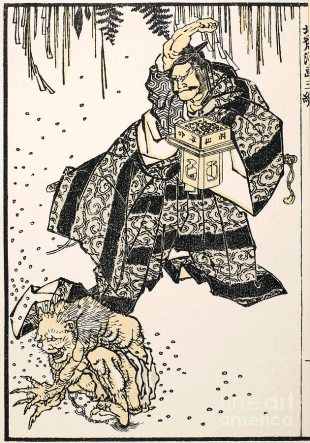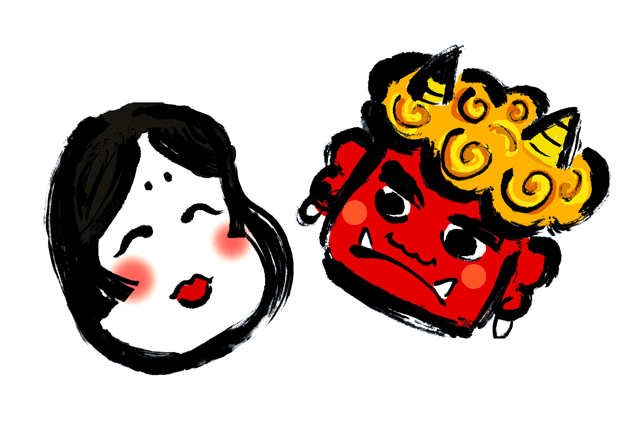The age-old holiday of Setsubun isn’t just one for the kids: it’s another opportunity to greet the still new year, full of beans.
By Brian Christian
I have never been sure about February. Such a cold, contrary month.
Perhaps it is simply because we have tired of winter that it seems to drag. Despite being the shortest of them all it’s not a month that hurries itself. Spring might be on its way but it remains tantalizingly out of reach, just around the next corner, just over the next hill. At this time of year I can’t help feeling like an impatient child on a long car journey: “Are we nearly there yet?”
In Europe our very wise forefathers had an interesting attitude towards the rather dark, cold period that followed their tenth month, December: they disliked it so much that they tried to ignore it completely, making the depths of winter a monthless period and, figuratively speaking, stopping the clocks until the emergence of better weather in March. It was only around 700 BC that the workaholic Romans decided that we couldn’t continue to have a 304-day year and simply write off the grim bit as if we were in some sort of snug hibernation. Thus Februarius was born: the month of purification, suggesting that even in days of old they were no strangers to the New Year detox.
It may seem odd here in Tokyo—where February is one of the driest, sunniest months (and often the coldest) – that the ancient Britons called it Salmonath or month of mud – hardly one for the tourist brochures! Another equally unappealing old English name for it was Kalemonath, or month of the cabbage, perhaps taking us back to that dreaded post-Christmas detox and those ghastly green “health” drinks that make their annual appearance on office desks around the world at this time of the year.

Send those oni packing (Image: Wikimedia Commons)
The arrival of February in Japan is both ominous and auspicious. Ask any child. Setsubun (節分) on the third day of the month, the eve of spring according to the old Japanese lunar calendar, sees the spirit realm at its closest to our human world. It is a time to take care – strange things might happen. You wouldn’t want a wandering demon to sneak through your door and take up residence for the year ahead. In the dim, dark, distant past you might have banged a drum or lit a bonfire and burned evil-smelling sardine heads to frighten off unwelcome visitors, but these days mamemaki (まめまき) or bean-throwing is the preferred method of exorcism. Of course, once any itinerant ogres have been sent on their way, it makes sense to eat up the beans but you must make sure that you eat just one for every year of your age, plus one for the year ahead – especially as they now tend to come sugar-coated!
I like the notion of Setsubun. For all our worldly modern-day sophistication, I feel sure that we can learn much from the folklore handed down to us through the ages; so often there are messages worth listening to in these archaic rituals and customs if only we are prepared to hear them. Had a bad year? Not happy with the cards that fate has dealt you and hoping for better luck this time round? Then do something about it! It’s up to you to bang that drum and throw those beans because the alternative is to let your demons walk all over you.
At the start of this cold, contrary month, just when all our New Year resolution is beginning to weaken, maybe a bit of bean-throwing is just what we all need to get us back on track.
Oni wa soto! Fuku wa uchi! Bring on the Year of the Monkey!
–Brian Christian is Principal of the British School in Tokyo
Main Image: Shiori tukishima/Shutterstock








